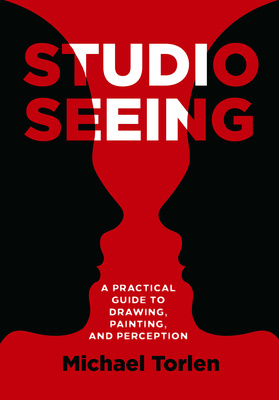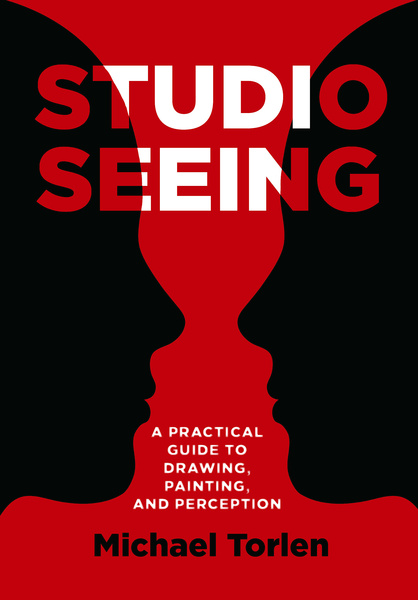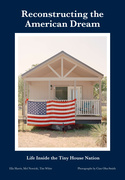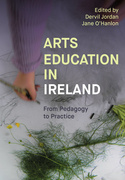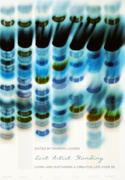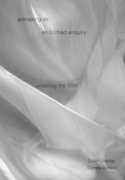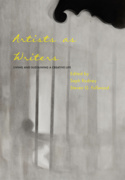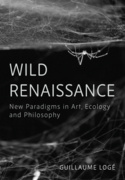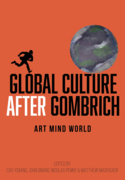Studio Seeing (Book)
A Practical Guide to Drawing, Painting, and Perception
A compelling case for vision-based pedagogy. It provides a wealth of insights, guidance, and exercises grounded in Gestalt perceptual theory and neurological research. The premise is that a student of drawing or painting must develop skills to see and create, using ground-directed looking rather than object-directed looking. 107 b/w illus.
Watch Michael Torlen's mini doc on Studio Seeing here
Access Chapter 5: Beyond Face or Vase for free here
Edition
Opens with several first-person anecdotes about the author’s life as a practicing artist and a discussion of the intellectual lineage of his vision-based pedagogy. Many more anecdotes from the author’s teaching appear in most chapters.
The author discusses perception as it benefits the artist in the studio. Perceptual laws govern both our experience of seeing and the artist’s process of creating. The book presents a proven process developed by the author over many decades of teaching and studio practice that the artist can apply to their own painting/drawing and/or teaching. The painting and drawing principles in the book are essential and yet not generally taught or understood. They will benefit anyone learning how to draw/paint or advance their practice. The book will also help practitioners to make rapid progress and to avoid clichéd, overused solutions. It also offers insights and discussions of interest to art lovers and “Sunday painters.” It is for everyone who enjoys viewing and thinking about art.
Integrated into the text are more than one hundred images—works of art by well-known historical and contemporary artists and students, photographs, and diagrams—to reinforce the concepts presented. A recap section ends each chapter, followed by an exercise, or group of related exercises, to encourage and guide the practitioner in immediate application of the concepts.
Michael Torlen is a visual artist, author, and Professor Emeritus of the School of Art+Design, Purchase College, State University of New York, where he taught painting and drawing, and received the Chancellor’s Award for Excellence in Teaching. He earned his BFA at Cranbrook Academy of Art and his MFA at The Ohio State University.
Although known for his seascapes of Maine, he also has a body of semi-abstract work about family, cancer, love, and death. Torlen maintains a studio and lives in Westbrook, Maine, with his wife, author and educator, Eleanor
Phillips Brackbill.
For more information:
www.michaeltorlen.com
www.michaeltorlenauthor.com
Figures
Foreword
Julian Kreimer
A Practical-Meditative Lineage XVII
Teaching XVIII
Learning to “See the Ground”
Preface
Learning to See
The Brick
The Lineage
Introduction
1. The Fear Factor
The Bare Canvas
Into the Void
Course of Action
Fear’s Tyranny
Mistakes and Accidents
Part-to-part
Recap
2. How We See It, How We Don’t
The 3D Cues
Perspective
Binocular Vision
Light and Shadow
Relative Motion
Recap
Exercises – Two or One Eyed
3. The Artist’s Vision
The Monocular Cues
Constancy
2D Visual Cues
Position
Shape-Size
Overlap
Value Contrast
Color Contrast
Hierarchy and Interaction
Recap
Exercises – 2D Cues
4. More About Seeing
Parts and Wholes
The Gestalt Contribution
Think Ahead
Arnheim
Where and What
Figuring the Ground
Object-Directed vs. Ground-Directed Seeing
Past Experience, Purpose, and Action
Recap
Exercises – Parts and Whole
5. Beyond Face or Vase
Head First
Figure-Ground
Not Negative and Positive
Edge-condition
Yes and No
Intentions, Meanings, and Context
Recap
Exercises – F/G
6. Forces in the Field
Inner Necessity
Closure
Coincidence of Edge and Continuity
Locales
Recap
Exercises – Three C’s
7. Line
Positioning Line
Contour
Gesture
Blind-contour
Cross-contour
Recap
Exercises – DYI
8. Value
Positioning Value
Reserving the Light
Adding and Subtracting
On Readymade
Adding Wash and Brush
Elegance or Clumsiness
Recap
Exercises – Plus and Minus
9. Brush, Paint, Process
Shape Paint, Don’t Paint Shapes
Color Studies
Bridging Triangle
DLWCDI
Recap
Exercises–DLM
10. Muscles and Marks
The Body Against Itself
Four Variables
Pressure
Tempo
Duration
Direction
Deliberate Practice
Recap
Exercises–PTDD
11. Figuring Where
Plumb, Level, and Square
The Frame
Sighting and Measuring
2D to 2D
Linear Perspective
Aerial Perspective
Sfumato
Recap
Exercises–Devices
12. Unmediated Response
Focal Point
Approximation
The Great Law
Recap
Exercises–Focal Point
13. Fixing
Jumping Parts
Add More of It
Build a Bridge
Reverse the Overlap
Adjust the Scale
Do Something Else
Recap
Exercises–Ground-Directed
14. The End is The Beginning
Limits of Language
Nothing Changes if Nothing Changes
Meaning, Metaphor, Myth
Last Words
Endnotes
Bibliography
Acknowledgments
About the Author
Index
“Studio Seeing is a timely work making a case for ‘vison-based pedagogy.’ The book is filled with helpful anecdotes, clever and memorable analogies, and excellent exercises. More than just an instruction book or teacher’s manual, Torlen explains the reason and the context for the exercises included in the book, articulating many of the ideas that painters understand in making their work but are often less able to explain.”
“Torlen’s experiences as a student, a teacher, and a practicing artist enhance his discussions of the psychology and physiological components in how we see. Studio Seeing is an informative examination of visual perception and the methods for advancing an individual’s skills in drawing and painting.”
“In this brilliant book, Michael Torlen sets out to create what he calls an “Academy of Individuals,” inviting artists to follow their individual interests and stylistic paths. Studio Seeing covers a lot of ground, from facing a bare canvas to chapters on perception, line, and value. By way of clear, well-wrought guidance, diverse illustrations, and engaging exercises, Torlen draws on a lifetime of art-making and teaching to enrich the creative lives of artists. The book is a gift to artists and those of us who want to know how the creative process works. Read this book and you’ll see.”
“Studio Seeing is a triumph. I don’t believe anyone has written about ‘seeing’ so clearly and completely. ‘Seeing’ things entails more than copying things that you see. Seeing ‘things’ is not understanding things unless you see them in relation to what is adjacent to them, in front of them, behind them or even things that are not there. It is the context of things that gives the viewer (or the artist) understanding. How you perceive things can control meaning; and meaning can vary from person to person. Therein lies the power of art. Having Michael Torlen as a teacher was a gift. It is thrilling to have a book that puts his lifetime of experience and thoughts in one place for artists, young and old, to learn from and enjoy.”
“Michael Torlen’s Studio Seeing, an assemblage of pedagogical postulates honed over a career of interacting with artists, is an essential volume for those interested in art, perception, artists, or the education of people with these interests.”
“A must have book for anyone who wants to learn how to ‘see.’”

